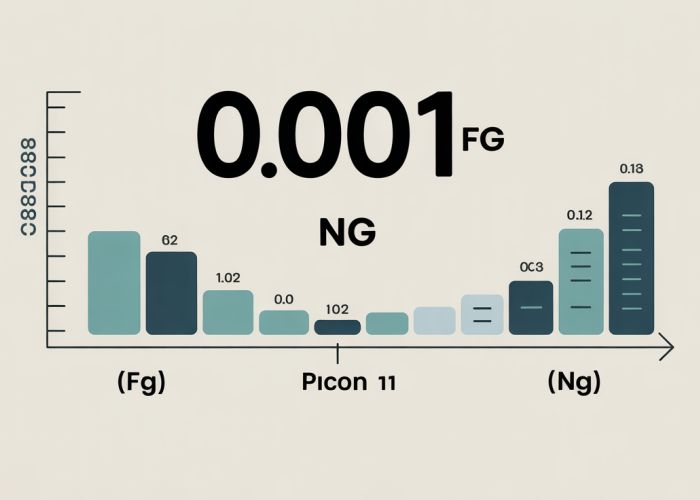Understanding the relationship between micrograms (µg) and nanograms (ng) is crucial in fields like pharmaceutical research, where accurate measurements are paramount. The International System of Units (SI) provides the standard for these conversions, ensuring consistency across scientific disciplines. This guide provides a simple and clear explanation to unlock the mystery of 0.001 µg to ng, enabling precise calculations in your work.

Unlock 0.001 µg to ng: Simple Conversion Guide!
This guide provides a straightforward explanation on converting 0.001 micrograms (µg) to nanograms (ng). We will break down the conversion factor and provide practical examples to ensure you understand the process.
Understanding the Units: Micrograms (µg) and Nanograms (ng)
Before performing the conversion, it’s crucial to grasp the meaning of micrograms and nanograms. Both are units of mass, representing very small quantities.
- Microgram (µg): One millionth of a gram (1 µg = 1/1,000,000 g = 10-6 g). The "µ" symbol is the Greek letter mu.
- Nanogram (ng): One billionth of a gram (1 ng = 1/1,000,000,000 g = 10-9 g).
Think of it this way: a nanogram is a smaller unit than a microgram.
The Conversion Factor: µg to ng
The key to converting micrograms to nanograms lies in understanding their relationship:
1 µg = 1000 ng
This means that one microgram contains one thousand nanograms.
Converting 0.001 µg to ng: Step-by-Step
Now, let’s apply the conversion factor to convert 0.001 µg to ng.
- Start with the value in micrograms: 0.001 µg
- Multiply by the conversion factor: 0.001 µg * 1000 ng/µg
The "µg" units cancel out, leaving you with:
- 001 * 1000 ng = 1 ng
Therefore, 0.001 µg is equal to 1 ng.
Practical Examples
To solidify your understanding, let’s look at some more examples using the same conversion principle:
-
Example 1: Convert 0.005 µg to ng.
- Calculation: 0.005 µg * 1000 ng/µg = 5 ng
-
Example 2: Convert 0.0001 µg to ng.
- Calculation: 0.0001 µg * 1000 ng/µg = 0.1 ng
Quick Reference Table
This table provides a handy reference for converting common values of micrograms to nanograms.
| Micrograms (µg) | Nanograms (ng) |
|---|---|
| 0.001 | 1 |
| 0.002 | 2 |
| 0.005 | 5 |
| 0.01 | 10 |
| 0.1 | 100 |
| 1 | 1000 |
This table demonstrates the linear relationship between micrograms and nanograms. Multiplying the microgram value by 1000 always yields the equivalent nanogram value.
FAQs: Unlock 0.001 µg to ng Conversion
Confused about converting micrograms to nanograms? Here are some frequently asked questions to help you understand the conversion, especially focusing on converting 0.001 µg to ng.
What is the basic relationship between micrograms (µg) and nanograms (ng)?
A microgram (µg) is a larger unit than a nanogram (ng). Specifically, 1 µg is equal to 1000 ng. This simple relationship is key to all conversions between these units.
How do I convert any microgram (µg) value to nanograms (ng)?
To convert from micrograms to nanograms, you simply multiply the microgram value by 1000. For example, to find how many nanograms are in a specific microgram amount, the formula is: ng = µg * 1000.
What is 0.001 µg equal to in nanograms?
Since 1 µg is equal to 1000 ng, then 0.001 µg is equal to 0.001 * 1000 = 1 ng. Therefore, 0.001 µg to ng is 1 ng.
Why is understanding this microgram to nanogram conversion important?
These units are commonly used in fields like medicine, pharmaceuticals, and chemistry when dealing with extremely small quantities of substances. Accurately converting between micrograms and nanograms ensures precision in calculations and measurements.
So, there you have it! Now you’re all set to confidently tackle those 0.001 µg to ng conversions. Go forth and conquer!



